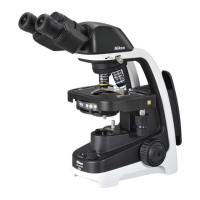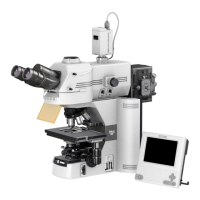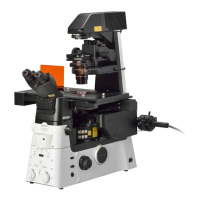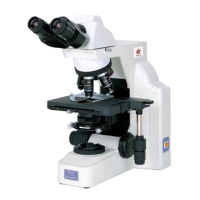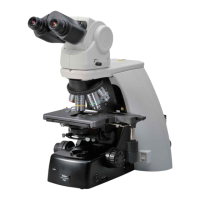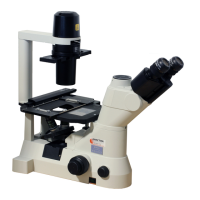Chapter 3 Individual Operations
3.16 Fluorescence Observation
51
3
3.16
Fluorescence Observation
3.16.1
Warning
The mercury lamp (or xenon lamp) used with the fluorescence attachment requires
careful handling. Be sure to read the warnings described in the beginning of this
manual and in the operating manual provided by the manufacturers of the super
high-pressure mercury light source (or high-intensity light source) and lamp. Observe
all the warnings and precautions described in those documents.
3.16.2
Fluorescence attachment shutter
The shutter blocks illumination. When suspending
microscopy, close the shutter to prevent fading of
specimen colors. (Set the shutter lever to the C
position to move the shutter into the optical path
and block light.) To protect important specimens,
make it a habit to use the shutter whenever
appropriate.
When pausing Epi-fluorescent microscopy to
perform microscopy diascopic light, move the
shutter into the optical path to block the
Epi-fluorescent light.
3.16.3
Light shielding plate of the fluorescence attachment
The light shielding plate protects the observer's eyes from ultraviolet light reflected from the
specimen. To remove the plate, loosen the clamp screw and pull it forward.
3.16.4
Field diaphragm of the fluorescence attachment
The field diaphragm controls the illumination on the area of the specimen being viewed.
Operating the field diaphragm lever changes the size of the field diaphragm. For normal
observations, stop down the diaphragm so that the aperture boundaries are just outside (or
inside) the field of view. Illuminating an area broader than necessary will result in stray light
entering the field of view, generating flare, reducing image contrast, and expanding the area of
the specimen subject to fading.
Appropriate field diaphragm settings are particularly important for photomicrography. In general,
good results will be obtained by stopping down the field diaphragm to slightly wider than the
area to be reproduced within the photo frame or monitor display.
Field dia

